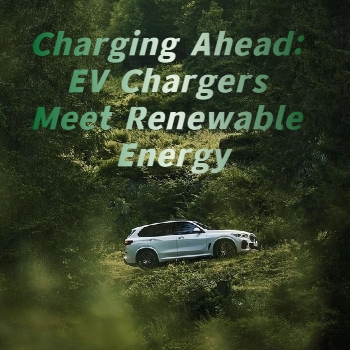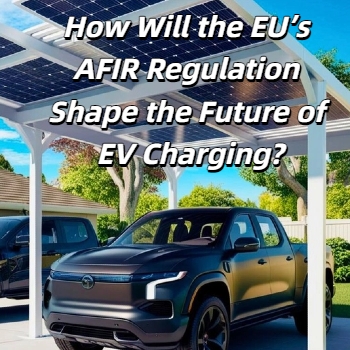Sep 12, 2025
📍Why combine EV chargers with renewable energy?
As electric vehicles become more popular, charging demand is rapidly growing. Traditional power grids face higher energy consumption and increased carbon emissions during peak hours. By combining EV chargers with renewable energy sources such as solar and wind, drivers gain access to cleaner, more sustainable charging options. This approach supports global carbon-neutrality goals while enhancing the eco-value of electric mobility.
🔬How does renewable energy power EV chargers?
Technically, renewable energy is usually captured via photovoltaic (PV) panels or wind turbines, then stored in battery systems for later use. When a vehicle needs charging, electricity can be supplied directly from storage or real-time generation. If renewable energy is insufficient, the system seamlessly switches to the grid to ensure a stable supply.
🖥️What is a solar-storage-charging integrated system?
“Solar-storage-charging integration” refers to the combination of PV generation, energy storage, and EV charging. During the day, solar power is stored in batteries and later used for charging at night or during peak demand. This model not only improves energy efficiency but also helps reduce charging costs. 👉 Our 150–480kW solar-storage ultra-fast charging solution brings this concept to life. By integrating high-power DC fast charging with energy storage, it supports intensive commercial use while reducing stress on the grid.
🛜How does Vehicle-to-Grid (V2G) work?
V2G technology transforms EVs from mere “energy consumers” into “energy suppliers.” When renewable energy is abundant, EVs can store power; when the grid is under pressure, vehicles can discharge electricity back to support demand. This mechanism increases renewable energy utilization while offering additional value for EV owners.
✅What should customers consider when choosing a green charging solution?
For households, it is important to evaluate rooftop solar feasibility, power capacity, and budget before selecting a solar-storage-charging setup. For commercial and public scenarios, equipment compatibility, charging scale, and intelligent energy management are key. 👉 Our product portfolio includes 3.5–7kW portable chargers, 7–22kW wall-mounted chargers, and 120–160kW DC fast chargers, allowing flexible solutions for both home users and commercial operators.
⁉️What does the future hold for renewable energy charging?
With policy support and advancing technology, green charging will soon become the default choice. Cities are embracing solar carports, community microgrids, and smart charging networks. With AI and big data integration, EV chargers will be able to adjust charging schedules based on weather forecasts and grid demand, maximizing renewable energy utilization. For businesses, this represents both a sustainability opportunity and a powerful branding advantage.
The integration of EV chargers and renewable energy is not just a technical trend, but a critical step toward sustainable energy transition and cleaner mobility. Our solutions have already been deployed worldwide, helping customers achieve efficient, reliable, and green energy use. Visit www.fescharging.com to explore the right solution for your needs.
Read More

